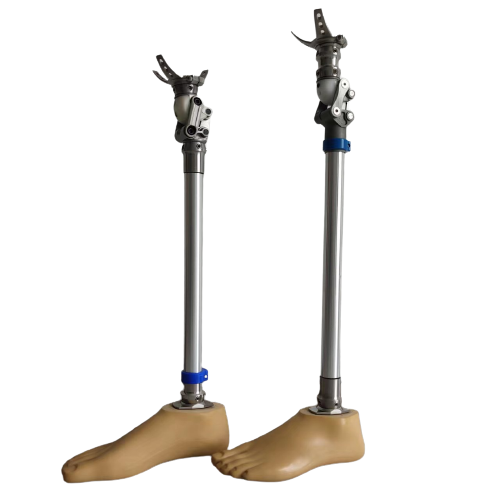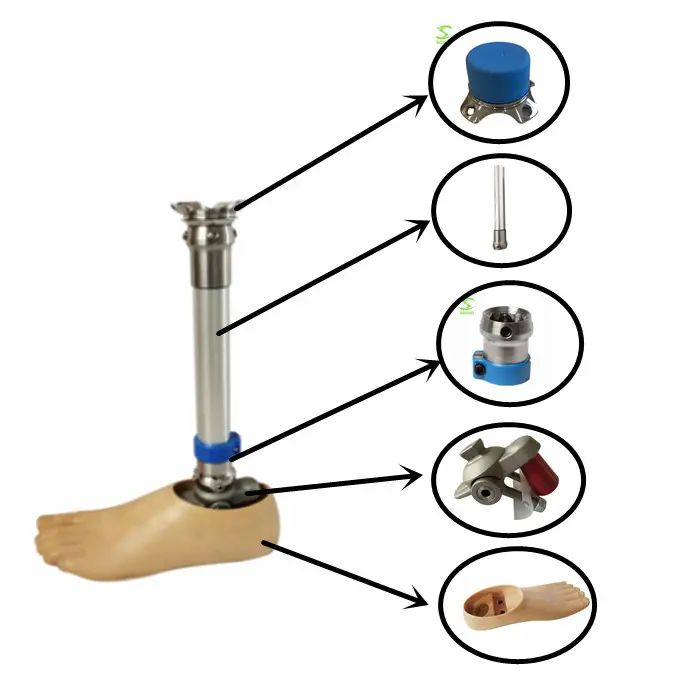Understanding Prosthetic Ankle Joints: Innovations and Benefits
Release Time:
Jun 01,2025
The prosthetic ankle joint is a critical component in the realm of medical devices, particularly for individuals who have experienced lower limb amputations. These specialized joints are designed to replicate the natural movement of the ankle, facilitating improved mobility and stability for users. Understanding the mechanics, innovations, and benefits of prosthetic ankle joints can provide valuab
The prosthetic ankle joint is a critical component in the realm of medical devices, particularly for individuals who have experienced lower limb amputations. These specialized joints are designed to replicate the natural movement of the ankle, facilitating improved mobility and stability for users. Understanding the mechanics, innovations, and benefits of prosthetic ankle joints can provide valuable insights for healthcare professionals and patients alike.
Prosthetic ankle joints come in various designs, including mechanical, hydraulic, and microprocessor-controlled types. Mechanical prosthetic ankle joints are often the simplest forms, relying on springs or other mechanical systems to control movement. Hydraulic joints offer more adaptability, allowing users to adjust their walking speed and gait. The latest advancements in microprocessor-controlled prosthetic ankle joints provide real-time adjustments to accommodate different terrains and activities, enabling a more natural walking experience.
One of the most significant benefits of a well-designed prosthetic ankle joint is the enhancement of mobility. These devices help users regain independence in their daily activities, from walking to running and even participating in sports. A properly fitted prosthetic ankle joint can substantially reduce the physical strain on the body, leading to improved overall health and well-being.
In addition to mobility, prosthetic ankle joints play a vital role in rehabilitation. After amputation, individuals often face challenges in adapting to their new circumstances. A functional prosthetic ankle joint can aid in the rehabilitation process by allowing for more effective gait training and physical therapy. This can ultimately lead to faster recovery times and a smoother transition back into everyday life.
The importance of a multidisciplinary approach in the selection and fitting of prosthetic ankle joints cannot be overstated. It involves collaboration between prosthetists, orthopedic specialists, physical therapists, and the patients themselves. A thorough assessment of the individual's needs, lifestyle, and preferences is crucial in determining the most suitable type of prosthetic ankle joint. Customization and ongoing support are essential components in ensuring user satisfaction and success.
As technology continues to evolve, the future of prosthetic ankle joints looks promising. Innovations in materials and designs are set to further enhance their functionality and user experience. Ongoing research focuses on improving weight distribution, shock absorption, and overall comfort, ensuring that individuals with amputations can live active and fulfilling lives.
In conclusion, prosthetic ankle joints represent a significant advancement in medical devices for lower limb amputees. By understanding their mechanics, benefits, and the ongoing innovations in the field, healthcare professionals can better support their patients in achieving optimal mobility and quality of life.
Keywords:
You Can Also Learn More About Industry Trends






